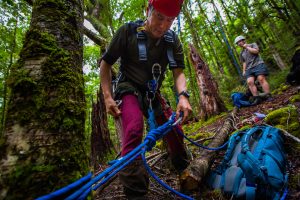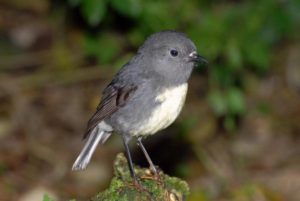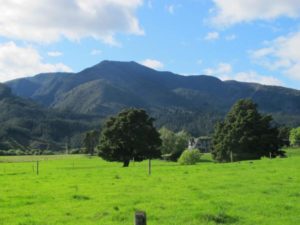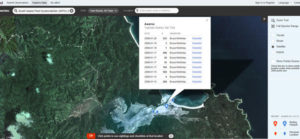While next years predicted beech mast will mean a huge increase in predator numbers it’s not all bad news for the park’s birds.
Many species like kākāriki and kākā will only breed in a mast year when the abundance of beech seed produced provides lots of food. Our ornithologist Ron Moorhouse says a mast will provide an opportunity to assess the state of kākāriki and boost kākā numbers in the Abel Tasman.
“Kākāriki is a boom and bust species and we can really only assess their status in the park in a year where there is successful breeding. For that we need a mast year,” says Ron.
Since 2014 over 50 kākāriki / yellow crowned parakeets have been released. However, other than anecdotal reports, we have no real data about whether the birds are breeding in the park environment. After a mast they can breed in their normal late summer breeding time and also through winter and spring.
The birds will be monitored to assess how well the breeding season goes which will provide valuable information.
Kākā also only breed in a mast year and we are using this opportunity to source the first clutch of eggs from Top of the South kākā nests in areas where the birds are doing well. The eggs will be hatched in captivity at Nelson’s Natureland Wildlife Trust and the chicks hand raised before being released in the park.
When their eggs are removed, the wild kākā are likely to have a second clutch. This means we are able to raise and introduce new birds with the right genetics into the Abel Tasman and the wild birds will still produce chicks which will hopefully fledge in the wild.
Of course the beech mast will also be a challenge as the numbers of introduced predators also increases with the extra food around. When the beech seed is gone, the predators turn to chicks and nesting birds and can decimate bird populations. However Operations Manager Andrew Macalister says we are well prepared for a mast year when it comes to predator control.
“When we started Project Janszoon a mast year was bad news as we weren’t sure how best to respond. Now it is good news as we know the birds will breed, we have effective trapping networks and if those networks are overwhelmed by predator numbers we can look at aerial predator control to protect the park’s birds,” he says.

Ron ready to retrieve the chicks or eggs



